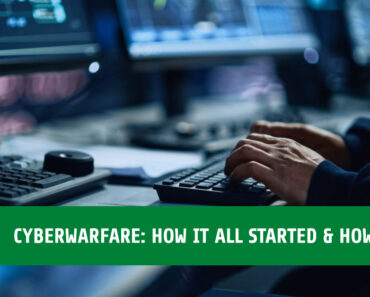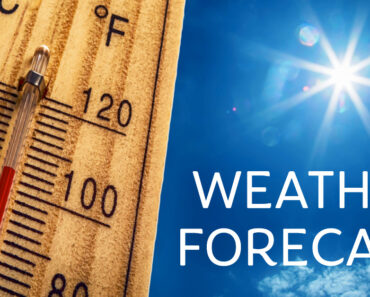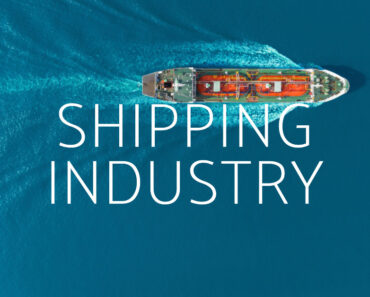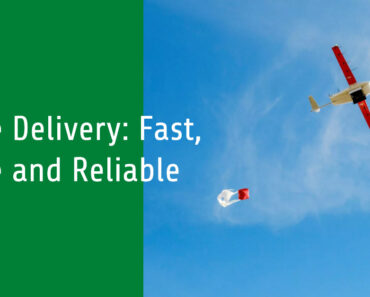I had an apple, you had an orange, and we both wanted an orange.
an apple.
Trading would make us happier.
Let’s imagine I had an apple tree and you had an orange tree, and the apples were ready but the oranges weren’t for another month.
I could offer you an apple now and promise to give you an orange in a month when they’re ready, making us both happier.
Maybe you didn’t want an apple.
Maybe a pear.
I just had my apple, but I wanted your orange.
Maybe a third pear-laden guy desired an apple.
I give him my apple, he gives you his pear, and you agree to give me your orange in a month, making us all pleased.
But then maybe we trade greater amounts and add more individuals with other fruits on different harvest schedules and decide that particular popular fruits are worth more and two of one equals one of the other and one of the other equals three of the third and… it begins to get a little complex.
We simplify by selling actual fruit for fruit credits, clay balls with a generic fruit symbol.
If I trade an apple into the system, I receive a credit, and when I want that orange, I trade the credit in—nobody needs to keep track of what I owe.
Because we have this system, we may as well add vegetables—sure, it’s not fruit, but we want veggies sometimes, and veggie farmers want fruit, so the system still works.
As the system grows with more things and intricacy, we begin to believe that these fruit credits have worth, even if just theoretically.
However, theoretical value can be converted into real value, so the clay balls themselves have real value.
Someone develops a free fruit credit storage company.
Better still, they’ll pay you for credit security.
That may be a hoax, but you invest 1,000 credits.
Watermelon farmers need more credits than they can exchange for an irrigation system to grow more watermelons this year and earn more fruit credits.
This new credit storage company gives 7,500 credits if she returns 9,000 in a year.
Since she’s a successful watermelon farmer, this looks like a safe bet. She’ll receive the new irrigation system, the new fruit credit protecting firm will earn more credits, and everyone will be pleased.
Even if they only had 250 credits, you can withdraw them at any time.
That’s because nine more farmers placed their thousand credits, and even if the safe-guarding firm just retained a quarter of them, a quarter of all deposits is considerably more than your 1,000, and the odds of everyone needing all their credits at once are negligible.
This is a free money machine—you, the bank, and the watermelon farmer all profit.
Everyone earn.
Wait—everyone earns money?
How did you, the bank, and the watermelon farmer get extra money?
We can find the source by closing the loop.
Ten persons with 10,000 credits deposit 1,000, giving the bank 10,000.
The watermelon grower borrows 7,500, leaving the bank with 2,500.
She buys an irrigation system from one of the 10 investors for $7,500.
One season later, the farmer delivers 9,000 watermelons to market and sells 900 to each of the same 10 who deposited their money in the bank.
They have 9,100 credits—1,000 in the bank.
The farmer provides the bank 9,000 for 11,500 credits.
The farmer has nothing, the ten individuals have 98,500, and the bank has 11,500, making 110,000 credits in the system—money has arrived again.
At the first phase, ten thousand-credit deposits go into the bank, but the ten people still have 10,000—1,000 of it is in the bank.
The bank doesn’t own the 10,000 in their vault, therefore it’s generated today.
New money appears after that loan.
Because of the fractional-reserve banking system, the initial depositors can each withdraw 10,000 credits.
The watermelon grower has 7,500 actual credits.
One blender exists if you share with a roommate.
Because you’re using it like a blender, it’s worth two blenders.
Money is tracked per-person, not per-blender.
It’s reasonable to say that the bank didn’t produce 10,000 credits since it couldn’t repay the original depositors if it lent 10,000.
Yet, giving away 7,500 works—a 25% reserve ratio is standard in a fractional-reserve banking system—so we may argue 7,500 was generated.
If you trust and participate in the global financial system, that 7,500 is money.
Loans and bank deposits are actual money with real value.
This is why answering the question of how much money exists is so difficult—there are at least six commonly accepted definitions incorporating different combinations of currency, demand deposits, traveler’s checks, time deposits, and more—and this means of money creation is one of the main activities that central banks like the Federal Reserve, Bank of England, and Bank of Japan regulate.
They limit banks’ lending by dictating how much money they must retain in reserves.
Money is only produced when it travels.
In 1867, when transporting money was difficult and banks were primitive, physical currency still linked to the overall amount of money—most dollars were represented by a bill or coin.
But, things have changed.
Paper substitutes for rare minerals accelerate money transfers.
Abstraction also grows money by giving consumers the assets to produce value.
Abstraction doesn’t transmit money from one bank, municipality, state, or nation to another like it does today—standardization does.
Before the Civil War, hundreds of US organizations supported thousands of paper money varieties.
In 1857, a Waltham watchmaker withdrew $20 to acquire Brookline equipment.
This is a Waltham Bank $20 note, redeemable in gold at the Waltham bank but of doubtful value elsewhere.
While the watchmaker doesn’t have to bring $20 Waltham dollars worth of gold, the Brookline merchant may not accept the note from a bank so far away.
Because of the distance, they may charge $23 Waltham dollars for cashing the note.
If the watchmaker is lucky and the Brookline merchant has numerous business contacts in Waltham, the merchant may accept Waltham dollars knowing they may utilize them later.
The Waltham watchmaker’s problem shows that money in various forms from many places was hard to carry, interact with, and transfer beyond of one’s own neighborhood.
1860s National Currency Acts altered this.
The contemporary check replaced thousands of privately backed banknotes, and federally licensed banks inaugurated a new age of money movement.
Under the new requirements, all nationally chartered banks had to keep 25% of their liabilities in gold in the basement.
Importantly, country banks and smaller banks might store their reserves in central reserve cities or the few major banks.
Someone might now take a check from their small bank, go into the city and buy goods, and then settle the check at the bigger, correspondent bank without any gold leaving the vault.
Its correspondent bank served as a center, linking innumerable minor banks to these two banks.
This simple link allows a consumer to move money regionally without the bother of negotiating a tangle of domestic exchange rates, boosting growth, and without the laborious and dangerous procedure of transporting physical coins or cash from bank to bank, speeding up the process.
In this scenario, our watchmaker could pay for supplies with a Waltham check rather than Waltham dollars, the merchant could deposit the check at their Brookline bank, and the Brookline bank, assuming they share a correspondent bank due to their proximity, would send the check to the correspondent, which would balance each bank’s funds by moving money across the basement.
When banks did not share immediate correspondent banks, this method was inefficient.
When a check transported money between banks without a direct relationship, they had to locate a third party bank, or often numerous banks, to connect them with a correspondent, incurring costs, delays, and postage.
T
Take this 1898 $43.56 check placed at Hoboken’s Second National Bank.
before Second National sent it to Harvey Fisk & Sons, who sent it to the Globe National Bank of Boston, who sent it to the First National Bank of Tonawanda, who sent it to the National Exchange Bank of Albany, who sent it to a bank in Port Jefferson, who sent it here, where it was finally drawn.
These early checks were wasteful, but they helped standardize and move an increasingly abstract form of money—dollar bank account totals.
The Federal Reserve Act of 1913 divided the country into 12 regions and made each regional federal reserve bank the clearing house for all regional checks, simplifying check accounting.
Its centralization expedited processing since a bank could now credit a merchant’s account and know which federal reserve bank to transfer it to, and also formalized strict accounting, which would allow money to go farther and become more abstract in the decades to come.
Checks were infrequent and localized in the early 1900s.
1950s followed.
People were earning, spending, and having more bank accounts than ever.
From 1943 to 1952, national check use increased from four to eight billion, and American banks processed 69 million checks daily through multistep validation and processing.
Banks closed at 2 p.m. to match signatures, run the adding machine, double-check the math, and package checks for delivery to the Federal Reserve.
That was hard, but necessary. Most bank clerical workers resigned within a year.
They had to be precise with more money than ever.
The Stanford Research Institute, Bank of America, and IBM constructed a room-sized computer that provided relief.
ERMA—the Electronic Recording Machine, Accounting—changed banking.
Before ERMA, all bank branches handled checks of all sizes without bank account numbers.
To sort checks by number rather than name on a computer, they must be the same size.
Once those standards were adopted, checks were entered into the computer, which read the magnetic ink, and if the account belonged to a Bank of America branch, ERMA would access the account stored in its 16-by-20 inch magnetic-drum memory, check for account holds, make sure the balance was positive, draw the amount, tally the total, save the new balance, and print the new record.
ERMA even checked the routing number by feeding the numbers into this algorithm to guarantee the check’s validity.
The 1950s paper processing difficulty was systemic, not Bank of America-specific.
No matter how many sorting computers were added to the system, if every transaction was a flimsy paper check that required to physically transit from person to bank to Fed to bank, the paper avalanche could not be contained.
In the 1970s, the Automated Clearing House Network changed domestic money flow by going computerized.
The ACH network enabled direct deposits, automated payments, and ATM transactions in place of thousands of checks daily.
Now, someone paying their insurance premium may give their bank account information to the insurance business, whose bank would produce an ACH entry seeking to withdraw money, which the ACH operator would process and debit one account and credit the other without a check.
Before the internet, security and accounting were crucial.
Businesses used micro-deposits to check bank accounts, federal reserve officials formed NACHA, and Congress approved the Electronic Money Transfer Act in 1978 to restrict customer liability and protect them from fraudulent charges.
Consumers were reassured.
The ACH Network transmits nearly $50 trillion annually with 23 billion transfers.
ACH safely transports massive amounts of money inside the US.
SWIFT, founded in the 1970s like ACH, streamlines international payments.
SWIFT’s 11,000 member institutions send payment instructions over a secure network and standardized message format.
International transactions were unstandardized, insecure, and inaccurate before SWIFT.
SWIFT started from scratch, issuing each member bank an 8–11-character code that specifies bank name, nation, location, and branch.
The software standardized payment communication.
They start with a bank code, but the payment instructions are in an MT103 document that the bank may trace and use as a receipt after the transaction.
Instead of transmitting money, the MT103 will instruct Deutsche Bank how many dollars to remove from Bank of America’s Nostro account at Deutsche Bank and convert them to euros to deposit into the recipient’s account.
SWIFT members may settle international transactions without sending money across seas, like correspondent banks did in the early 1900s without shipping gold coins.
SWIFT transfers are normally completed within 24 to 48 hours after being launched and transmitted using SWIFTNets’ encrypted messaging system because to its ease compared to previous systems. Multi-bank transactions sometimes take longer.
Although though SWIFT is a member-owned cooperative and doesn’t maximize profit, managing a worldwide network that securely transfers over 40 million messages a day is expensive and difficult.
Member banks pay to join SWIFT and pay each message—costs that build up and trickle down.
Nowadays, international transfers—whether for business or to family—usually incur a $40 charge.
Others have suggested stacking a simpler system on top of money transfers to save cost and complexity.
Wise, one of the world’s hottest fintech businesses, focuses on remittances—lots of low- to medium-income individuals working abroad pay those big fees to send money to their families—but Wise built a system that almost totally avoids middlemen.
If a US person sends $1,000 to an Australian, they deposit money into Wise’s US account, then the firm orders its Australian account to send the equal amount, minus costs, to the receiver.
They’re private-market SWIFT.
It’s a basic, low-cost system that achieves the same goal.
Banks cannot.
If Wise delivers money without debiting the sender, the firm loses $1,000.
A bank error that provides the beneficiary $1,000 without debiting the sender creates $1,000.
It cannot happen.
Money fails.
Trust breaks.
System fails.
Money behaves differently when it arrives outside of our control.
Money is merely bookkeeping.
That covers my orange debt.
If you give me the orange and I don’t give you the fruit credit, the system failed—the accounting failed.
Transfers must be as reliable as passing a clay ball to operate the current, computerized financial system.
Given the complexity of the global financial system, simulating physicality in a broad, dispersed digital network is difficult.
Without these costly intermediaries, money is useless.
Alternatives, such as the blockchain, are emerging, and central banks like the Federal Reserve are considering introducing blockchain-based digital currencies, but money is still the world’s currency, and its worth depends on the system’s capacity to account for it.






